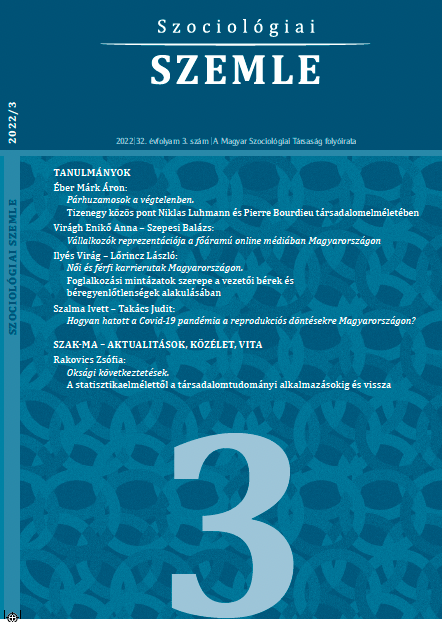Gender and career development
The role of occupational patterns in executive pay and wage inequalities
Keywords:
wage decomposition, occupational paths, labor market inequality, gender differences, sequence analysis, managerial career path
Abstract
Today, there are still significant gender differences regarding the chances of becoming a manager and in the wages of managers. The aim of our study is to contribute to the analysis of the gender wage gap by exploring a new element, the occupational pathways leading to managerial positions and especially the gender differences in these career patterns. In our empirical setting, we use fixed effects panel regressions and decomposition techniques to quantify the contribution of occupational patterns to managerial wages and to the gender gap in managerial wages. Using administrative data of the Databank of the Centre for Economic and Regional Studies, we analyze the wages of 3837 workers in their first managerial position and show a male wage advantage of about 12 percent. We find that around one-third of the variance of managers’ wages can be explained by prior career, with the larger share coming from the sequences of occupations (occupational patterns and transitions) rather than the occupations themselves. With regard to the gender wage gap, only a smaller share is explained by differences in prior career, of which the larger part coming from the occupations themselves. Our analysis, therefore, shows that selection by occupational career path is also strongly present among those who become managers, and has an impact on both the wages experienced in first managerial positions and the gender pay gap.
Published
2022-11-25
How to Cite
IlyésV., & LőrinczL. (2022). Gender and career development: The role of occupational patterns in executive pay and wage inequalities. Hungarian Review of Sociology, 32(3), 57-83. Retrieved from https://ojs.mtak.hu/index.php/szocszemle/article/view/9402
Issue
Section
Studies





